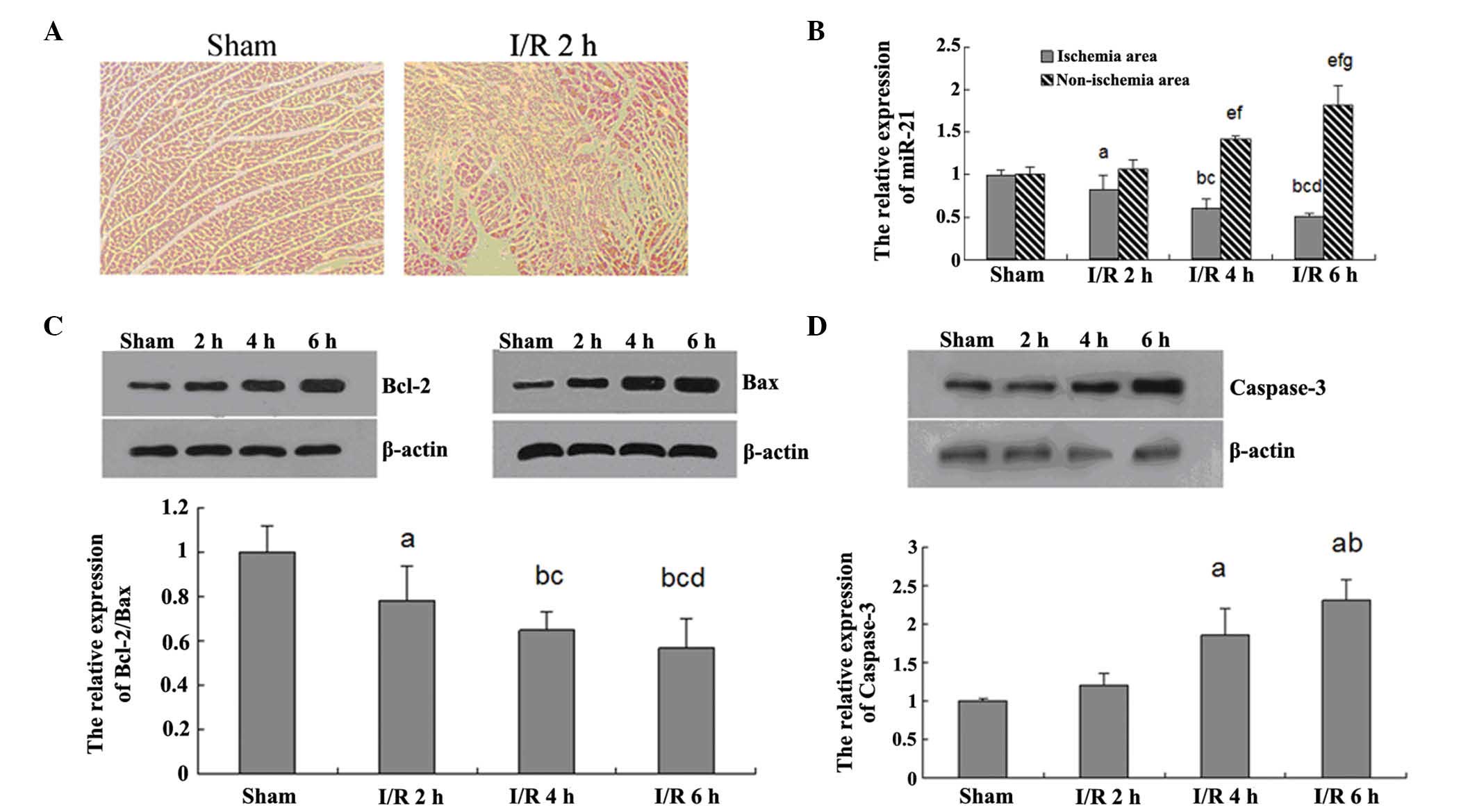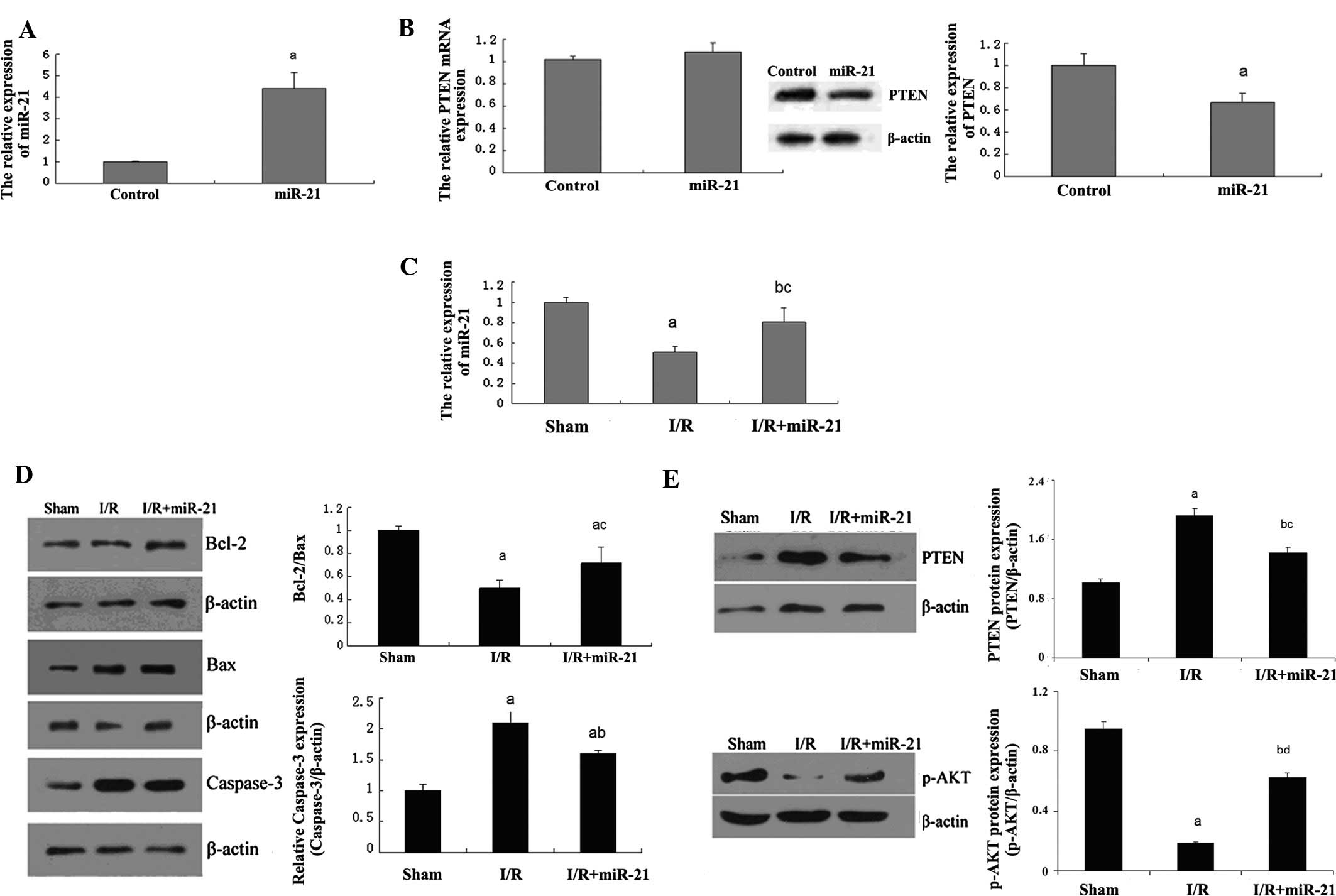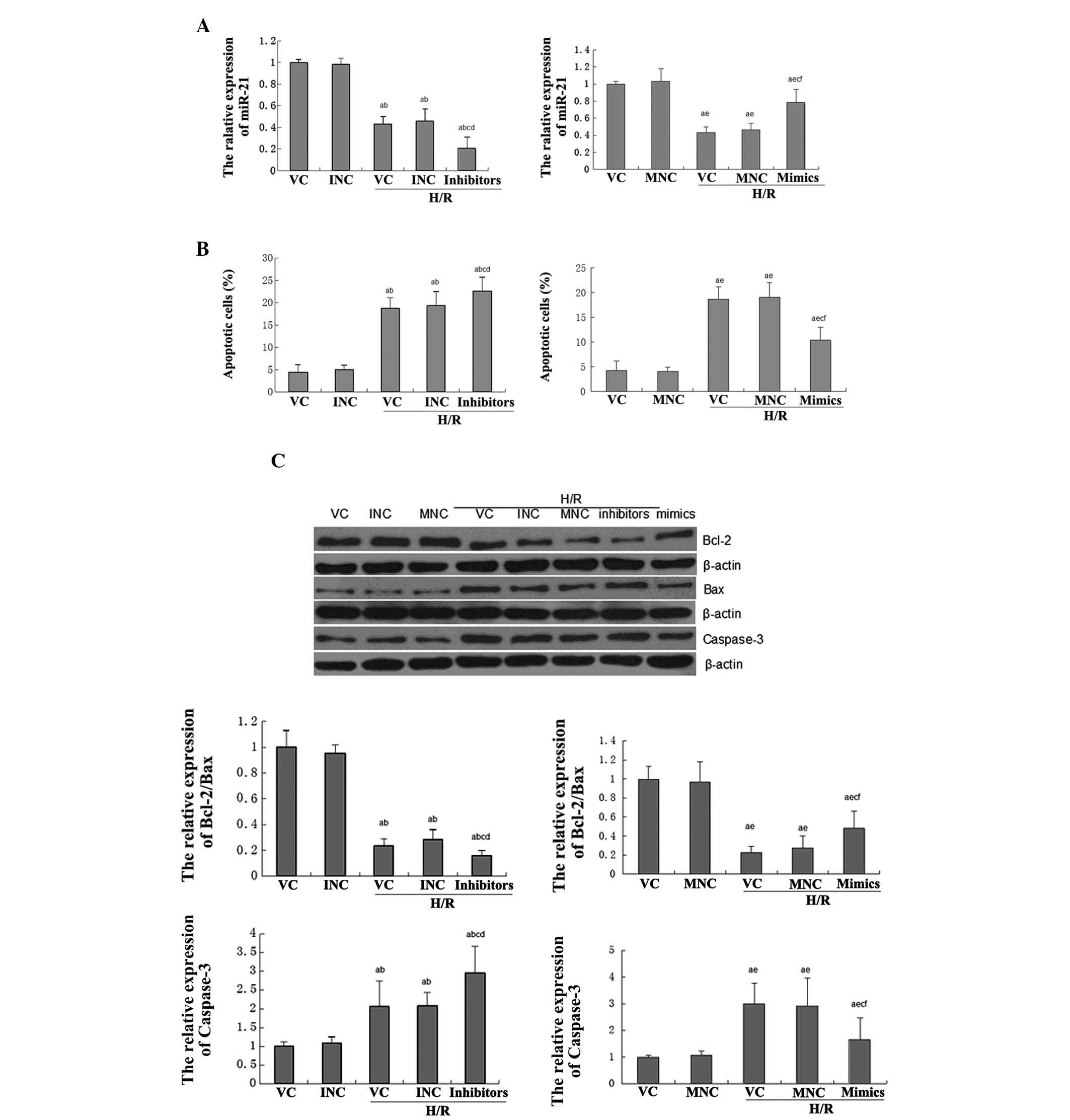|
1
|
Ganguly R, Lytwyn MS and Pierce GN:
Differential effects of trans and polyunsaturated fatty acids on
ischemia/reperfusion injury and its associated cardiovascular
disease states. Curr Pharm Des. Apr 10–2013.(Epub ahead of
print).
|
|
2
|
Kalogeris T, Baines CP, Krenz M and
Korthuis RJ: Cell biology of ischemia/reperfusion injury. Int Rev
Cell Mol Biol. 298:229–317. 2012. View Article : Google Scholar : PubMed/NCBI
|
|
3
|
Xu T, Li D and Jiang D: Targeting cell
signaling and apoptotic pathways by luteolin: cardioprotective role
in rat cardiomyocytes following ischemia/reperfusion. Nutrients.
4:2008–2019. 2012. View Article : Google Scholar : PubMed/NCBI
|
|
4
|
Guo W, Kan JT, Cheng ZY, et al: Hydrogen
sulfide as an endogenous modulator in mitochondria and mitochondria
dysfunction. Oxid Med Cell Longev. 2012:8780522012.PubMed/NCBI
|
|
5
|
Ha T, Liu L, Kelley J, Kao R, Williams D
and Li C: Toll-like receptors: new players in myocardial
ischemia/reperfusion injury. Antioxid Redox Signal. 15:1875–1893.
2011. View Article : Google Scholar : PubMed/NCBI
|
|
6
|
Young RW: Hyperoxia: a review of the risks
and benefits in adult cardiac surgery. J Extra Corpor Technol.
44:241–249. 2012.PubMed/NCBI
|
|
7
|
Nagai T, Anzai T, Kaneko H, et al: Impact
of systemic acidosis on the development of malignant ventricular
arrhythmias after reperfusion therapy for ST-elevation myocardial
infarction. Circ J. 74:1808–1814. 2010. View Article : Google Scholar
|
|
8
|
Porrello ER: microRNAs in cardiac
development and regeneration. Clin Sci (Lond). 125:151–166. 2013.
View Article : Google Scholar : PubMed/NCBI
|
|
9
|
Chen LJ, Lim SH, Yeh YT, Lien SC and Chiu
JJ: Roles of microRNAs in atherosclerosis and restenosis. J Biomed
Sci. 19:792012. View Article : Google Scholar : PubMed/NCBI
|
|
10
|
Zhu H and Fan GC: Role of microRNAs in the
reperfused myocardium towards post-infarct remodelling. Cardiovasc
Res. 94:284–292. 2012. View Article : Google Scholar : PubMed/NCBI
|
|
11
|
Yang KC, Ku YC, Lovett M and Nerbonne JM:
Combined deep microRNA and mRNA sequencing identifies protective
transcriptomal signature of enhanced PI3Kalpha signaling in cardiac
hypertrophy. J Mol Cell Cardiol. 53:101–112. 2012. View Article : Google Scholar : PubMed/NCBI
|
|
12
|
Cheng Y and Zhang C: MicroRNA-21 in
cardiovascular disease. J Cardiovasc Transl Res. 3:251–255. 2010.
View Article : Google Scholar : PubMed/NCBI
|
|
13
|
Hers I, Vincent EE and Tavare JM: Akt
signalling in health and disease. Cell Signal. 23:1515–1527. 2011.
View Article : Google Scholar : PubMed/NCBI
|
|
14
|
Tomek M, Akiyama T and Dass CR: Role of
Bcl-2 in tumour cell survival and implications for pharmacotherapy.
J Pharm Pharmacol. 64:1695–1702. 2012. View Article : Google Scholar : PubMed/NCBI
|
|
15
|
Zakeri Z and Lockshin RA: Cell death:
history and future. Adv Exp Med Biol. 615:1–11. 2008. View Article : Google Scholar
|
|
16
|
Cheng Y, Ji R, Yue J, et al: MicroRNAs are
aberrantly expressed in hypertrophic heart: do they play a role in
cardiac hypertrophy? Am J Pathol. 170:1831–1840. 2007. View Article : Google Scholar : PubMed/NCBI
|
|
17
|
Qin Y, Yu Y, Dong H, Bian X, Guo X and
Dong S: MicroRNA 21 inhibits left ventricular remodeling in the
early phase of rat model with ischemia-reperfusion injury by
suppressing cell apoptosis. Int J Med Sci. 9:413–423. 2012.
View Article : Google Scholar : PubMed/NCBI
|
|
18
|
Sayed D, He M, Hong C, et al: MicroRNA-21
is a downstream effector of AKT that mediates its antiapoptotic
effects via suppression of Fas ligand. J Biol Chem.
285:20281–20290. 2010. View Article : Google Scholar : PubMed/NCBI
|
|
19
|
Cheng Y, Liu X, Zhang S, Lin Y, Yang J and
Zhang C: MicroRNA-21 protects against the H(2)O(2)-induced injury
on cardiac myocytes via its target gene PDCD4. J Mol Cell Cardiol.
47:5–14. 2009. View Article : Google Scholar : PubMed/NCBI
|
|
20
|
Liu CZ, Liu W, Zheng Y, et al: PTEN and
PDCD4 are bona fide targets of microRNA-21 in human
cholangiocarcinoma. Chin Med Sci J. 27:65–72. 2012.PubMed/NCBI
|
|
21
|
Meng F, Henson R, Wehbe-Janek H, Ghoshal
K, Jacob ST and Patel T: MicroRNA-21 regulates expression of the
PTEN tumor suppressor gene in human hepatocellular cancer.
Gastroenterology. 133:647–658. 2007. View Article : Google Scholar : PubMed/NCBI
|
|
22
|
McCubrey JA, Steelman LS, Chappell WH, et
al: Ras/Raf/MEK/ERK and PI3K/PTEN/Akt/mTOR cascade inhibitors: how
mutations can result in therapy resistance and how to overcome
resistance. Oncotarget. 3:1068–1111. 2012.PubMed/NCBI
|
|
23
|
Tang Y and Wang MH: MicroRNA-21 protects
cardiomyocytes from tumor necrosis factor-alpha induced apoptosis
in vitro via modulating PTEN/AKT/FOXO3a pathway. Chinese Journal of
Cardiovascular Diseases. 41:135–142. 2013.(In Chinese).
|
|
24
|
Ma YX, Guo Z and Sun T: CGRP inhibits
norepinephrine induced apoptosis with restoration of Bcl-2/Bax in
cultured cardiomyocytes of rat. Neurosci Lett. 549:130–134. 2013.
View Article : Google Scholar : PubMed/NCBI
|
|
25
|
Xu XP, Zhai D, Kim E, et al:
Three-dimensional structure of Bax-mediated pores in membrane
bilayers. Cell Death Dis. 4:e6832013. View Article : Google Scholar : PubMed/NCBI
|
|
26
|
Walensky LD and Gavathiotis E: BAX
unleashed: the biochemical transformation of an inactive cytosolic
monomer into a toxic mitochondrial pore. Trends Biochem Sci.
36:642–652. 2011. View Article : Google Scholar : PubMed/NCBI
|
|
27
|
Renault TT and Manon S: Bax: Addressed to
kill. Biochimie. 93:1379–1391. 2011. View Article : Google Scholar : PubMed/NCBI
|
|
28
|
Fiandalo MV and Kyprianou N: Caspase
control: protagonists of cancer cell apoptosis. Exp Oncol.
34:165–175. 2012.PubMed/NCBI
|
|
29
|
Snigdha S, Smith ED, Prieto GA and Cotman
CW: Caspase-3 activation as a bifurcation point between plasticity
and cell death. Neurosci Bull. 28:14–24. 2012. View Article : Google Scholar : PubMed/NCBI
|
|
30
|
Poreba M, Strózyk A, Salvesen GS and Drag
M: Caspase substrates and inhibitors. Cold Spring Harb Perspect
Biol. 5:a0086802013. View Article : Google Scholar : PubMed/NCBI
|
|
31
|
Kale J, Liu Q, Leber B and Andrews DW:
Shedding light on apoptosis at subcellular membranes. Cell.
151:1179–1184. 2012. View Article : Google Scholar : PubMed/NCBI
|












